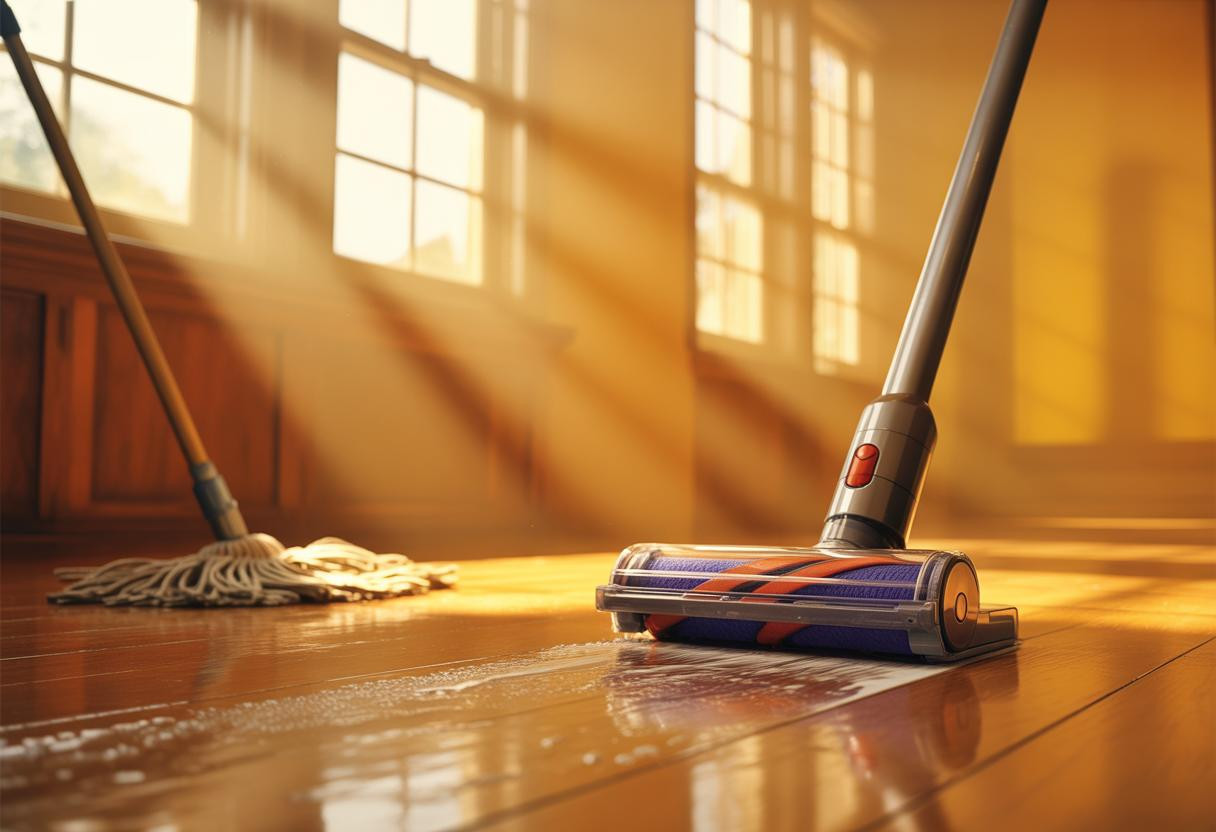The Dyson WashG1 floor cleaner has sparked intense debate among cleaning enthusiasts, with its revolutionary roller technology challenging everything we thought we knew about wet floor cleaning. After analyzing extensive performance data and user feedback, this premium device reveals surprising truths about modern home cleaning that could reshape your entire approach to floor maintenance.
The technology that’s redefining wet floor cleaning
Unlike traditional wet-dry vacuums that rely on suction, the WashG1 employs counter-rotating motorized rollers with an astounding 64,800 microfiber filaments per square centimeter. This engineering marvel distributes water through 26 precise hydration points while simultaneously separating debris from liquid – a process that eliminates the odor expulsion issues plaguing conventional suction-based systems.
The numbers tell a compelling story: 3,000 square feet of coverage on a single 35-minute charge, with debris separation happening at the source rather than mixing everything in a single tank. This approach mirrors effective household cleaning solutions that prioritize precision over brute force.
What performance data reveals about cleaning efficiency
Counter-rotating rollers vs traditional suction systems
Testing reveals that Dyson’s roller mechanism achieves superior liquid absorption compared to suction-based competitors. The dual-pass system (front and back rollers) provides extended dwell time for stain removal, while traditional vacuums often redeposit dirty water onto cleaned surfaces.
The maintenance advantage nobody talks about
Here’s the counterintuitive insight: the WashG1 requires zero filter replacements and features dishwasher-safe components with a self-cleaning cycle. This maintenance-free approach, similar to simple cleaning innovations, eliminates ongoing costs that traditional wet-dry vacuums accumulate through filter and pad replacements.
Real-world performance and user experience insights
At 10.8 pounds, the WashG1 maneuvers easily under furniture with its low-profile design. Pet owners report exceptional results removing hair and liquid spills, while the separate clean and dirty water tanks (0.26 and 0.21 gallons respectively) prevent cross-contamination that plagues single-tank systems.
However, the 35-minute runtime creates limitations for larger homes, and the hard-floor-only compatibility narrows its target market to urban dwellers and apartment owners with predominantly tile, hardwood, or laminate surfaces.
Economic analysis reveals surprising value proposition
Despite premium pricing around $999, the total cost of ownership equation shifts dramatically when factoring in zero ongoing consumable costs. Traditional wet-dry systems accumulate expenses through replacement filters, pads, and cleaning solutions – costs that compound over the WashG1’s expected lifespan.
The environmental impact calculation is equally compelling: reduced plastic waste from disposable cleaning products, lower water consumption per cleaning cycle, and elimination of filter waste. For households seeking calculating long-term investment returns, the math becomes increasingly favorable over time.
Future implications for cleaning technology
The WashG1’s roller technology signals a broader shift toward precision cleaning systems that prioritize efficacy over versatility. Industry experts predict next-generation features including AI-powered surface detection, solid-state batteries extending runtime beyond 60 minutes, and potential multi-surface adaptability through retractable roller systems.
Cross-industry applications are already emerging, with similar roller mechanisms finding applications in industrial floor cleaning and textile processing sectors.
The verdict on revolutionary vs evolutionary
The Dyson WashG1 succeeds in redefining wet floor cleaning for its specific niche – hard floors in medium-sized homes. While the premium price and surface limitations create barriers, its maintenance-free operation and superior debris separation justify the investment for target users. This isn’t about replacing every cleaning tool; it’s about optimizing the one task it performs exceptionally well.
